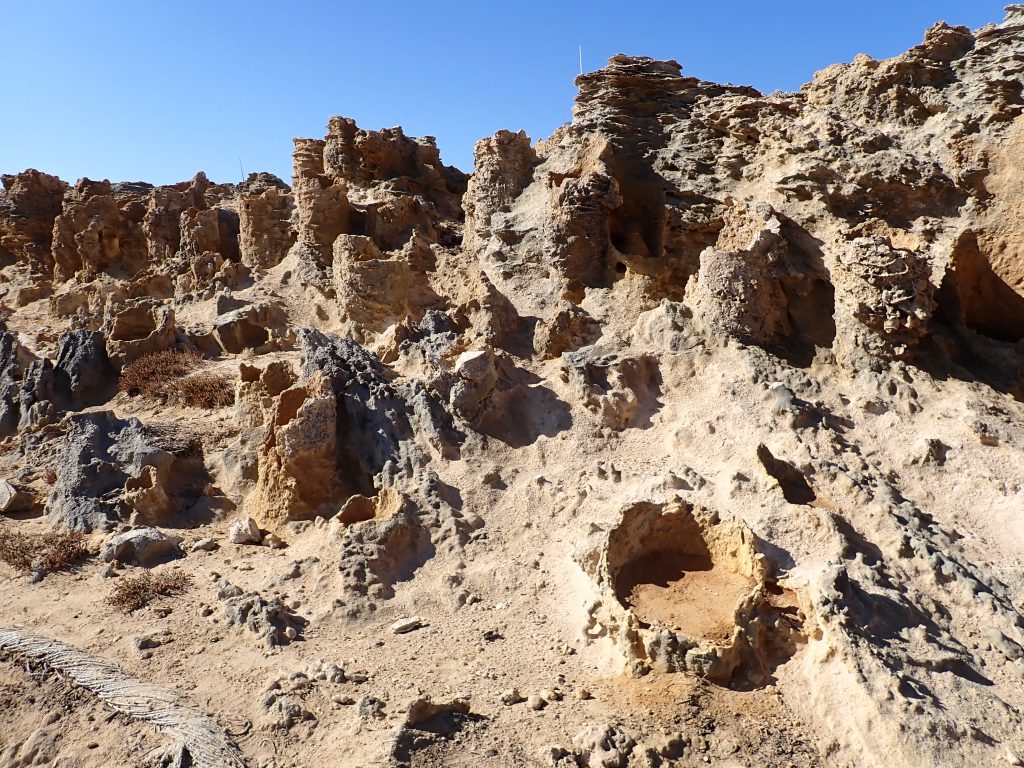Late yesterday we had an epiphany, but it was not of the good kind …. We realised that Australians celebrate Labour Day, but … they don’t all celebrate it on the same day. In fact, the Victorians seem to like their Labour Day a week later than all the states further west. This left us with something of a conundrum because the long weekend means that Australia comes out to play and much of their playing involves campsites. Apart of that playing (literally) is also the Port Fairy Folk Festival. So, most of the campsites on the Great Ocean Road are completely booked up when we want to go to them. This morning was therefore spent doing lots of browsing and then phoning. A campsites app was duly downloaded (and purchased) which was both useful and useless as it told us there was nothing available!
Eventually, after much pondering and indecisiveness, decisions were made and the initial decision was to stay in Portland another day. This didn’t seem too much of a hardship as we still had lots of the Tourist Information lady’s highlighting which had not been covered. However, Portland also went from being a fairly empty campsite to a completely full one in just one day as we got the last space available. We then also managed on the phone to pick up an unpowered site at a campsite inland at Camperdown, so that was the next few days sorted.
So, we carried on exploring Portland. We headed off down the eastern side of Cape Nelson, stopping initially at the Yellow Rock and then for a walk down to the Enchanted Forest.
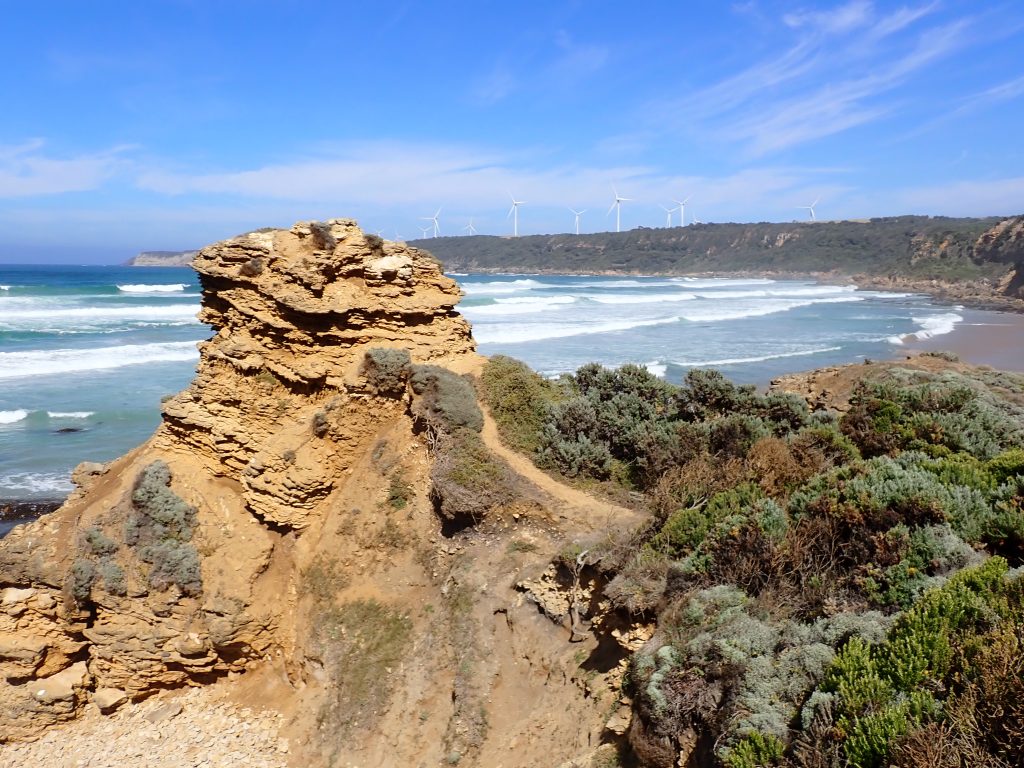
The Enchanted Forest may perhaps have suffered slightly from being over-sold by the name, but it was a lovely walk. The walk takes you down the hill for about a kilometre into a grove of Moonah trees. These grow all around and intertwine themselves giving a feeling of being in another almost Narnian world. Creepers and vines of Bower spinach just add to the effect.
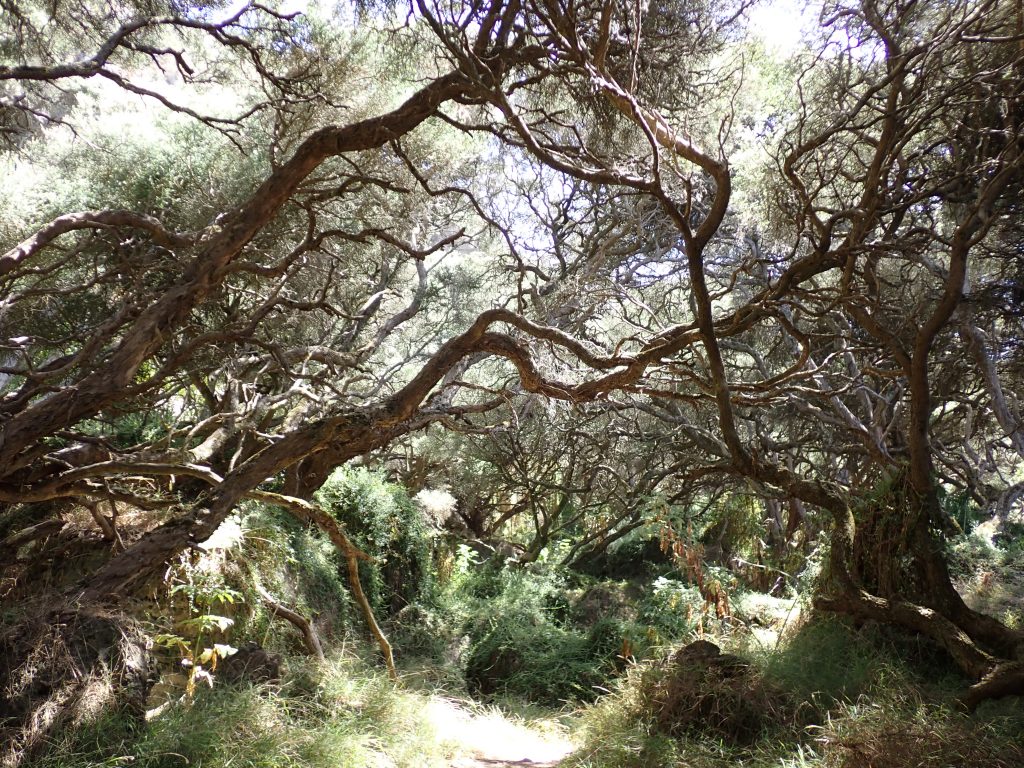
From there on down to the end of the road, well the end of Cape Nelson anyway. The lighthouse at the end gives a great view of the coast and the immaculately decorated lighthouse stands out – exactly as a lighthouse should! The lighthouse was built in 1884. There was something of a competition between Cape Bridgewater next door and Cape Nelson as to where the lighthouse should be, but the view of the Harbourmaster James Fawthrop prevailed and Cape Nelson it was. The best part though was a café by the lighthouse and a very nice lunch of English muffins (what else!) buttered with dill butter with smoked salmon and a poached egg. That set us up for the next, much more challenging part ….
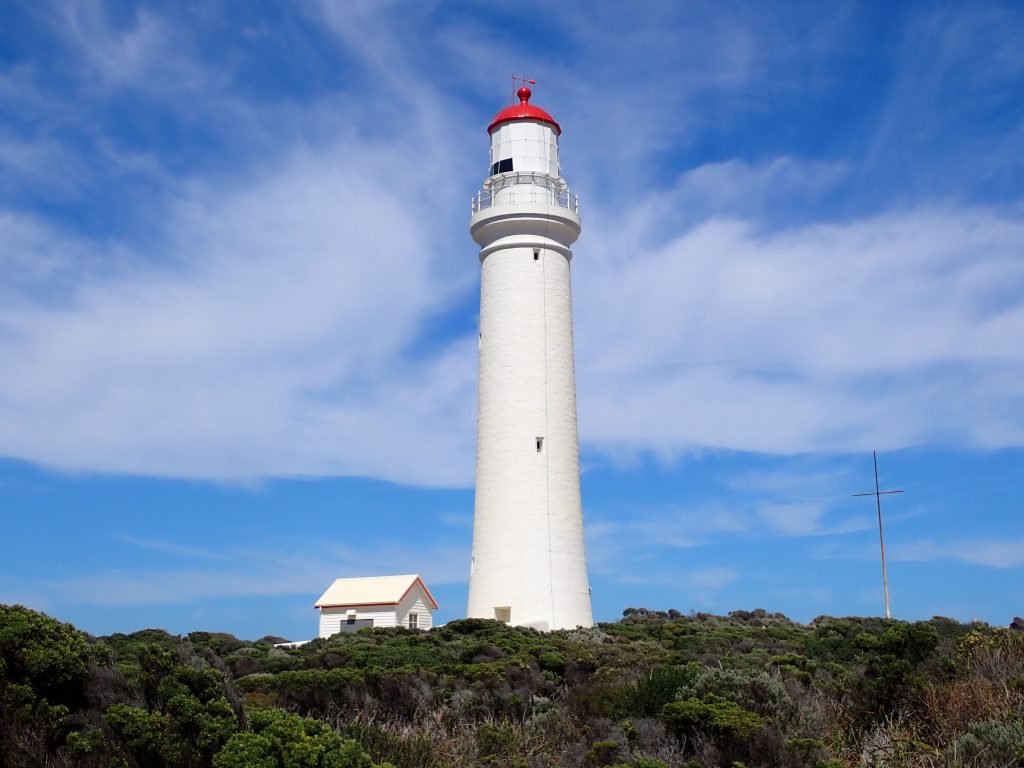
After this alimentary sustenance we headed for the next door cape – Cape Bridgewater. About a half hour drive brought us into town and we parked on the front to start a walk to the seal colony. This sounds like it should have been easy – it wasn’t. The walk takes you over the highest point on the cliffs in Victoria at 135m, but as if this wasn’t enough, you have to go up hill and down dale to even get to that. It was though a lovely walk with some spectacular views of the coast. When you eventually get to the seal colony, it is to view them from a platform around 55 metres in the air. However, this protects the colony from intrusion and, given this is one of the few mainland seal colonies for Australian fur seals, this is important. It was well worth the walk. The sight of them lounging around on the rock shelf and frolicking in and out of the water was an amazing one.
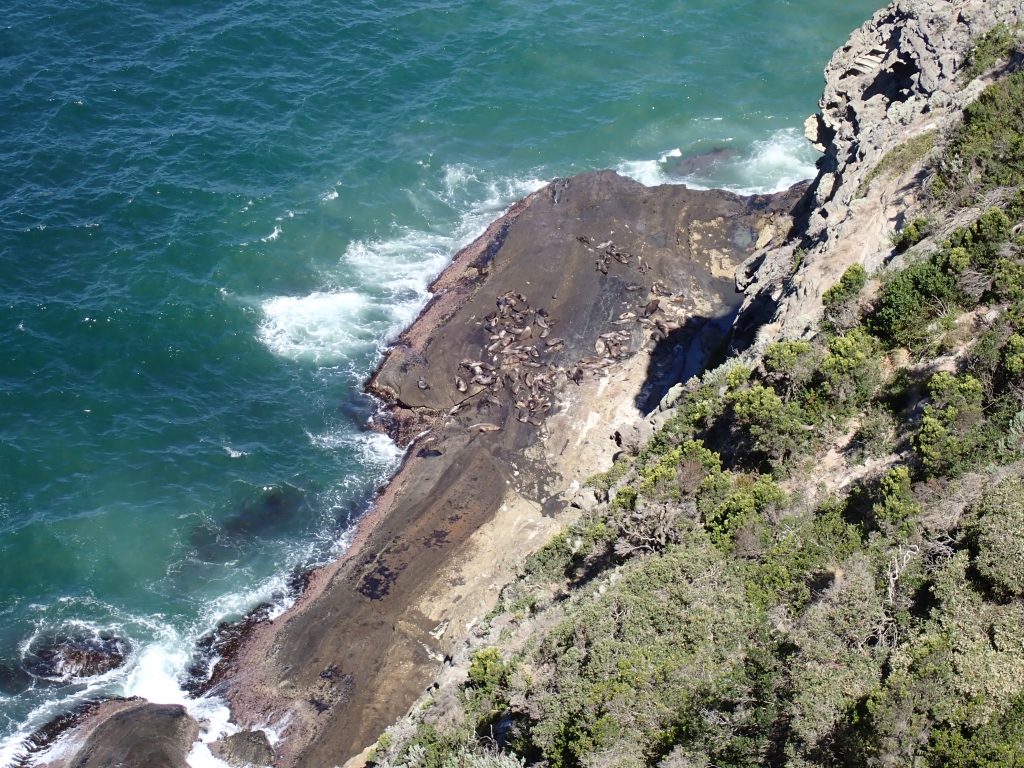
The final stop at Cape Bridgewater was to see some blowholes and a petrified forest. I was much more excited about the former as opposed to the latter, but the reality proved to be exactly the opposite. The petrified forest sounded like it should be a bunch of trees who had watched too many Hitchcock films. Indeed the area looks like trees turned into stone. The reality sadly is less prosaic. They are apparently hollow tubes of limestone called “solution pipes”. Millions of years of rainfall means that they are gradually eroded. It begins with water gathering in a shallow pan of sand and this then seeps downwards dissolving the limestone. The mineral saturated water then effectively cements the sand, forming hard, trunk-shaped pipes which look exactly like trees which have been turned into stone.
